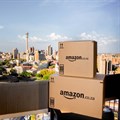Since Amazon.co.za officially went live in South Africa earlier this year, the question everyone has is, 'Can homegrown e-commerce businesses compete against global juggernauts?'
As described by World Wide Worx in its Online Retail in South Africa 2024 report, Amazon’s introduction on 7 May was “probably the most momentous event in the local e-commerce industry since the launch of Checkers Sixty60 in 2020”.
The Jeff Bezos-owned company could not have chosen a more opportune time to enter the local market. A study by World Wide Worx, in partnership with Mastercard, Peach Payments, and Ask Afrika, shows that South Africa’s online retail sector surged to R71bn last year — a 29% increase from 2022.
However, while the e-commerce giant has added more noise to the local e-commerce landscape, it remains to be seen whether Amazon offers buyers in South Africa any more product choices.
It is also worth noting that Amazon does not always succeed in the new international markets it enters.
According to its e-commerce App Revenue and Usage Statistics for 2024, the app market analysis portal Business of Apps says it has struggled outside of North America.
“Shopee and Meesho have surpassed Amazon in annual downloads, and Shopee has control over several Southeast Asian countries.”
“Latin America is another region that appears less sold by the Amazon pitch, with Mercado Libre, Shopee, and AliExpress all competing for market share in the region.”
Craig Lubbe, head of marketplace at South African e-commerce ecosystem Bob Group, says the power of local should never be underestimated.
“We have seen consistent support from a strong community of buyers and sellers within the collectables group of categories. This includes things like antiques, coins, stamps and other collectables. These categories make Bob Shop a unique space,” he says.
“While we offer mainstream consumer goods sold at fixed-prices, Bob Shop also still facilitates our sellers’ fixed-price and auction-format products. Some of these buyers and sellers have been active on the platform from its inception and have seen many changes to our offering over the years.”
Ensuring return-visit frequency
Consistency, he adds, holds the key to ensuring return-visit frequency for homegrown marketplaces.
Sellers on Bob Shop, for example, handle orders on average in just under two days, while the business’s integrated couriers make deliveries in South Africa within the same time frame. This, together with automated tracking updates for consumers, contributes to the consistent experience offered to buyers on the platform.
Pricing is another massive factor in determining return-visit frequency.
In the South African e-commerce environment, rules and pricing differ across local marketplaces.
“While there may be benefits in trying out the different platforms, in the long term, it may prove more manageable for a seller to focus most of their efforts on one platform, apart from their own e-commerce channels,” Lubbe says.
It is a given that there will be a high overlap in product assortment between new international marketplaces and established local platforms. However, the main points of differentiation will fall within pricing and service.
Lubbe points out that while asking sellers to drop pricing can work as an effective temporary measure, it is not typically a sustainable mechanism for retaining customers.
“Maintaining good delivery and communication standards, coupled with a vast product assortment, is a great mechanism to retain your customers.
“What we have done at Bob Shop, for example, is set standard shipping and automated communication processes to allow sellers to focus on selling. We have also built tools to help sellers easily integrate their e-commerce websites. To remain competitive, you need these differentiators.”








































